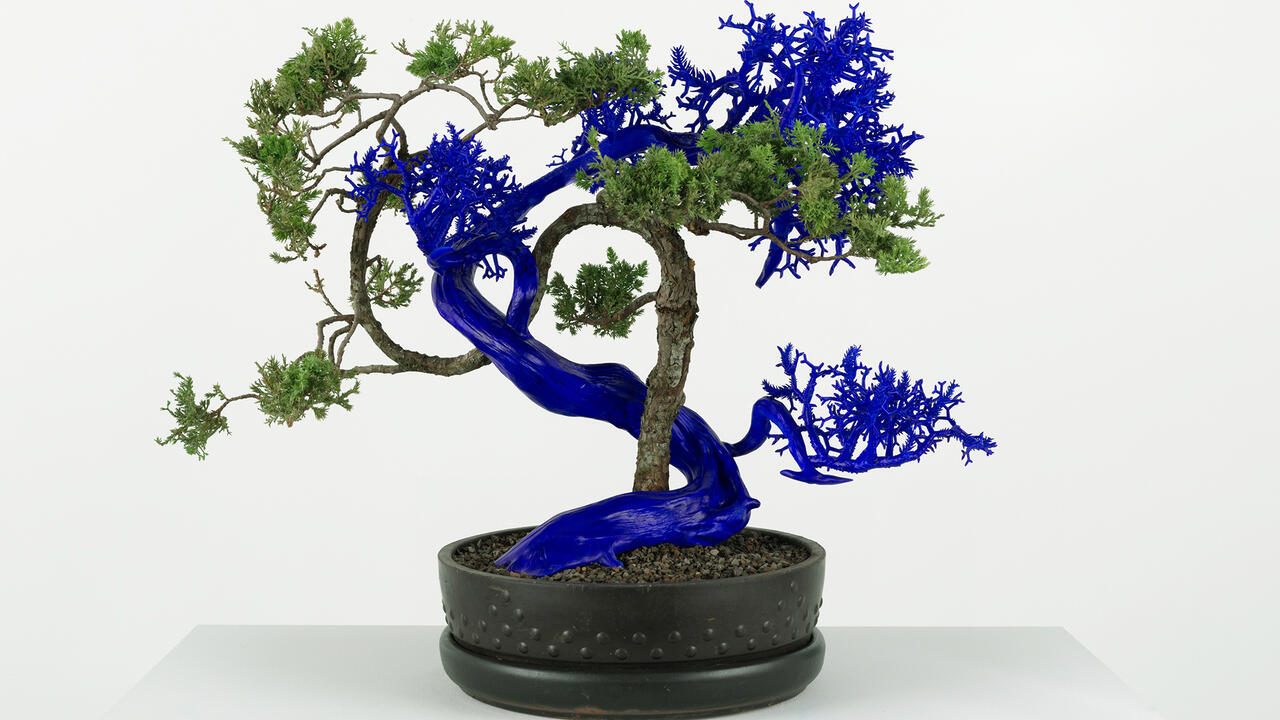Performa 17
Various venues, New York, USA
Various venues, New York, USA

Loosely influenced by the legacy of dada, the 2017 Performa biennial – led by chief curator RoseLee Goldberg – sought to blur the boundary between art and daily life and, at its best, consider a new age of anxiety not so dissimilar to the Weimar era. Throughout the month of November, Performa seemed to be everywhere – in the tube, splashed across billboards and pulsing away in after-hours gatherings.
In this sense, the most emblematic work may have been Jimmy Robert’s Imitation of Lives (all works 2017), which situated viewers among several performers at Philip Johnson’s Glass House in New Canaan, Connecticut. A series of vignettes modeled on the Kammerspiel, or intimate stage drama, incorporated text by Audre Lorde and music by Brian Eno, with references to the security state, the policing of desire and the over-policing of black subjects. Bodies moved unnervingly across the staid and pristine modernist pilgrimage site. The leitmotif was a reminder of Johnson’s affair with Jimmie Daniels, ‘a cabaret singer from Harlem’, complicating the site’s white-bread 1950s idylls.
Barbara Kruger was perhaps the highest profile contributor this year, with projects that included limited-edition subway cards, a roving school bus and a Lower East Side skate park, all emblazoned with her signature white-on-red dicta. These, and a collaborative merchandizing pop-up with Volcom, were presented under the arch-heading of The Drop. And yet, for all of their bluntness of address and exculpatory affinities with earlier avant-gardes, Kruger’s contributions seemed like a particularly stale form of regress. Kruger once repurposed sans-serif sloganeering, then lifestyle brands like Supreme repurposed Kruger. In 2017, consumers queued up to purchase bespoke trophies of cultural proximity from each. Gilded youth culture, it seems, is as good a business as ever.

Such moments are another reminder that the boundary between art, commerce and spectacle is blurrier than it was 30 years ago, before Kruger’s rise, or indeed a century ago during the dada ‘fairs’ of the 1920s. This was certainly the case with critic Teju Cole’s first foray into performance, Black Paper, which was staged at City Point, a Brooklyn mall, food court and condominium. Cole’s recent book, Blind Spot, showcased his talent for wringing poignance from the concise juxtaposition of text and image, like his forerunner W.G. Sebald. At City Point, audiences watched Cole disrobe and climb into bed for an in-the-round experience meant to evoke anxious dreams, wherein his photographs played across six channels.
Black Paper, however, ultimately read like a 4D version of the book, a forced scroll through the well-curated Instagram feed of a celebrity influencer. This stood in stark contrast to Julie Mehretu’s merging of image and sound, MASS (HOWL, eon), which set her eponymous, monumental abstract diptych to a subtle, expressionistic score by Jason Moran, which he composed while Mehretu painted in an abandoned gothic church. The result was a textured aural journey that built on Moran’s ongoing collaboration with abstract painters, and further erodes the illusory cordoning of the visual and the sonic. Their pairing echoed Performa curator Adrienne Edwards’s recent inquiries into blackness as a visual and cultural field, and also demonstrated the biennial’s capacity to foster powerful new collaborations.

Performa was animated by an envoy of artists from South Africa. The tightly blocked movements of Kemang Wa Lehulere’s I cut my skin to liberate the splinter – an array of playground set pieces and rude musical instruments, apparently built from refuse – conjured the innocence and terror of youth, adapted to the violent games of our modern age. The exhausted performers’ bodies and elegiac gestures linger in memory weeks later, from a mournful trumpet solo to the delay-pedal dirge of a fearsome, improvized harp and Wa Lehulere’s declaration of his own name, which hung in the air like an incantation.
Similarly, William Kentridge took the stage under a vaulted nave at Harlem Parish for a one-time rehearsal of Kurt Schwitters’s 1932 sound poem, ‘Ursonate’. Kentridge commanded the room with an earnest, percussive rendition set to his signature projected drawings. At certain points, the breakdown of language merged seamlessly with the palimpsest of images, which conjoined the trauerspiel (tragedy) of Kentridge’s Johannesburg with the mechanistic terror of WWI-era nationalism and our own grim present. By turns hypnotic and humorous, it nonetheless sounded the alarm.

Above all, though, this Performa belonged to photographer Zanele Muholi, whose rich self-portraits delighted straphangers on train platforms and hung strategically at commercial intersections as welcome icons of a better future. Muholi, in the midst of several major solo shows, used the occasion as an extension of her ‘visual activism’, by which image making and exhibition become zones of collaboration, conversation and advocacy. Her many events across the city elaborated the dadaist merging of politics and unmoored creativity, but without directly citing that past. (This included a jubilant showcase at a gaudy downtown hotel and a three-hour series of performances in the Bronx.) Her multi-platform residency delivered on the latent promise of art’s social function – so often invoked on the biennial circuit – and was a microcosm of an ambitious, rambunctious and timely Performa.
Main image: Jimmy Robert, Imitation of Lives, 2017, performance documentation. Courtesy: Performa and The Glass House; photograph: © Paula Court
























